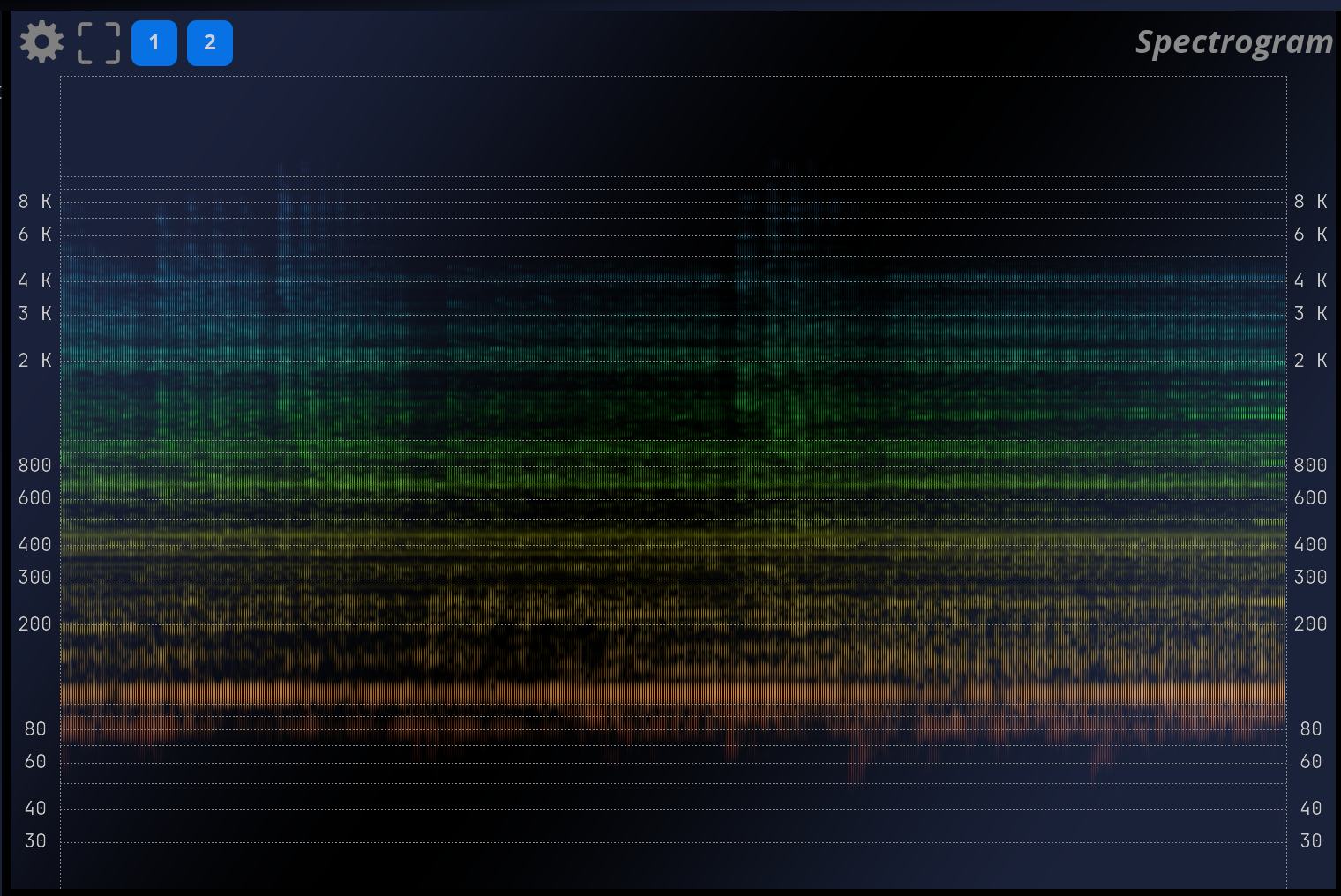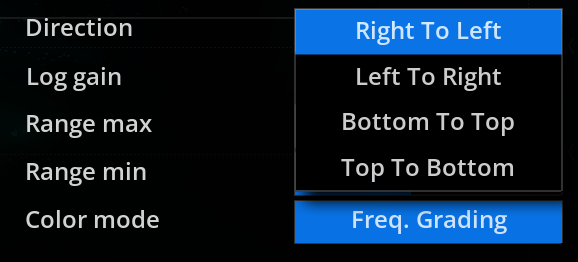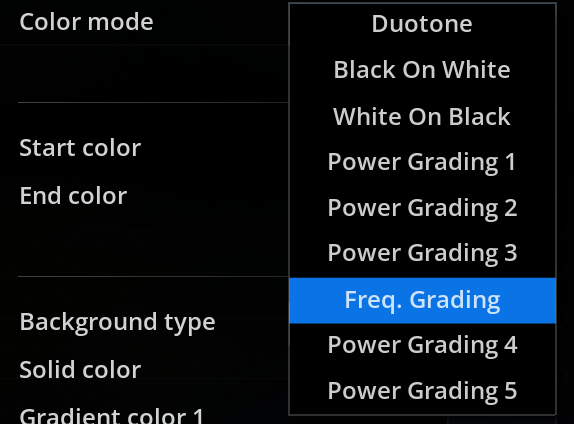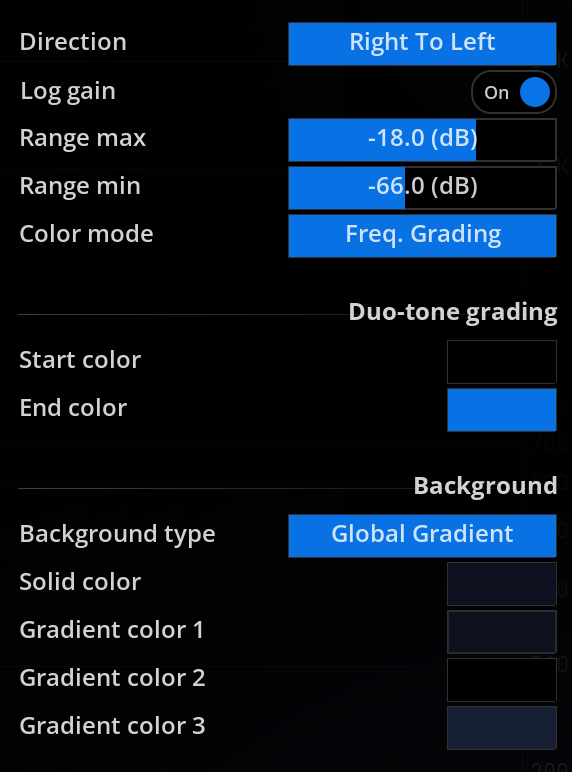Spectrogram
Usage
The spectrogram is a two-dimensional view of the evolution of the signal’s spectrum over time, i.e. a frequency (Y-axis) versus time (X-axis) plot (or the invert, depending on the direction setting), with the magnitude modulating the color and intensity of the pixels.
A spectrogram can be computed using the STFT (short-term Fourier transform) as well as other means. It serves as a useful tool to get a global picture of how the frequency content of a signal changes over time, and eases identification of its structure. Broadband noise appears as background, a pure tone as a horizontal line, and a transient as a vertical line.
Harmonic content appears as horizontal groups of parallel lines and vertical bars respectively, etc.
Settings
Spectrogram setup
| Name | Description |
|---|---|
| Direction |
Defines the scrolling direction of the spectrogram. |
| Log Gain | Toggles logarithmic scaling of the magnitude spectrum on and off. Default is on. When enabled, the magnitude at a given time-frequency point is applied a logarithmic scaling before being converted to a pixel value. This has the effect of compressing the dynamic range, and makes low energy components stand out more, but it also decreases the contrast of the display. |
| Range Max | Sets the maximum amplitude spectrum value to be displayed. |
| Range Min | Sets the minimum amplitude spectrum value to be displayed. |
| Color Mode |
Duotone: Black On White: White On Black: Power grading 1, 2, 3, 4, 5: Frequency grading: |
Duo-tone grading
| Name | Description |
|---|---|
| Start/end colors | Sets the color for minimum and maximum amplitude components respectively, when color mode is set to Duotone. |




